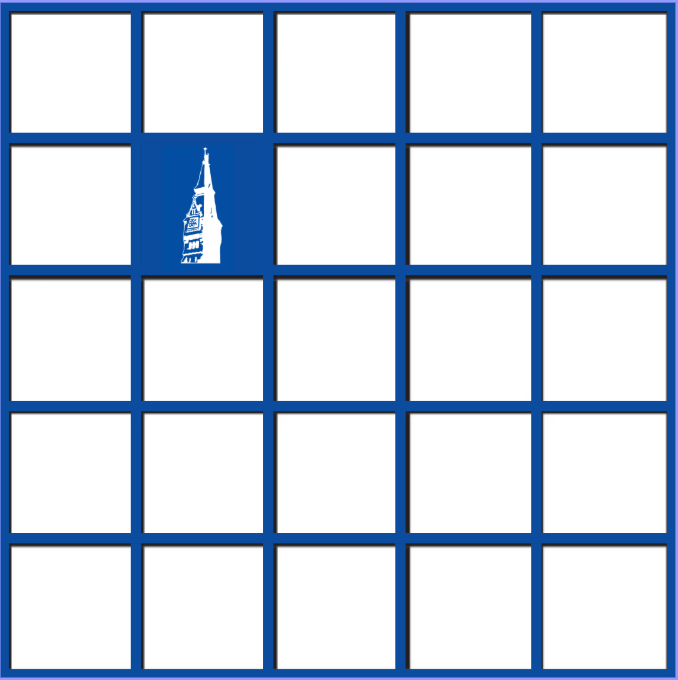An award-winning Irish author chronicled her writing process and read excerpts from her past and current work at a Georgetown University event Sept. 29.
Sinéad Gleeson showcased the relevance of Irish literature on a global scale and read excerpts from “Hagstone,” her debut novel, and from an in-progress novel. The reading was the first of an event series hosted by Georgetown’s Office of Global Irish Studies aimed at introducing Irish studies and the field’s impacts.

Gleeson said writing “Hagstone” took her around 10 to 12 years to complete, predating her essay collection “Constellations: Reflections from Life,” which won Non-Fiction Book of the Year at the 2019 Irish Book Awards and depicts the body as it goes through a variety of life events, including sickness, health, motherhood and love.
“With a novel, it is a very big engine. It’s a very big beast. You have to stay on it,” Gleeson said during the event. “And if you get away from it for even a couple of months, you go back and you’re like, ‘What the hell is this?’ So you kind of have to keep it. So by size and its volume, it’s a very big thing to carry around in your head.”
Cóilín Parsons, the director of Global Irish Studies who moderated the event, said Gleeson is not only an accomplished writer but also a strong collaborator with experiences across disciplines.
“It’s not often that we find someone who’s a novelist, and a nonfiction writer, and such a prolific editor and such a generous collaborator with colleagues across not just writing, but also across all of the arts world in Ireland and beyond,” Parsons said at the event. “I just want to say that especially, that’s one of the great privileges of having Sinéad here, because Sinéad carries with her all of the people that she has worked with in Ireland and elsewhere.”
Gleeson introduced her novel “Hagstone” by describing the meaning of its title, saying it reflects the major themes of the novel: seeing new and different perspectives.
“A hagstone is a stone you find on a beach, but a true hagstone has one hole bored all the way through it,” Gleeson said. “They’re often referred to as witches’ stones, adder stones, they’re considered quite talismanic. I heard about them years ago from an artist that some people think that if you hold it up to your eye and look through it, you see another version of the world. So this book, because the main character is an artist, is very much about looking and ways of seeing.”
Gleeson, who was wearing a pin of a Palestinian flag within an outline of Ireland, said the setting of her novel, an isolated island, is partially a manifestation of people’s desire to leave society due to current political and socioeconomic turmoils, citing what she characterized as threats to democracy and free speech.
“It’s just the world is very precarious, things like decency and democracy and First Amendments — they once seemed to be very unshakeable and now they don’t feel like that anymore,” Gleeson said.
Megan Rooney (COL ’20), a graduate of the Global Irish Studies Fellowship who attended the event, said Gleeson’s talk was a successful kickoff for the rest of the year, arguing the Office of Global Irish Studies is uniquely situated to showcase modern-day Irish literature and culture.
“I thought it was very insightful, loved hearing both about her writing process and ‘Hagstone,’” Rooney told The Hoya. “A lot of people know about more old history, for Ireland and Irish literature. So I like that these events bring a more modern take.”
Prior to the event, Gleeson said she hopes that even though her literature is based on Ireland and its culture, readers across the world will be able to resonate with the messages and themes.
“It’s not a surprise to me, on campuses around the world, that there is so much Irish literature,” Gleeson told The Hoya. “There was a time when that was a specific kind of thing, about fields and farms and alcoholics and people like that. Irish literature now — I do feel like an Irish writer, but I think all of us feel like global writers, because even when I’m writing about this island, I’m writing about a lot of places.”
“It’s not just about this one place,” Gleeson added. “It’s like any book you read, it doesn’t matter where it’s set. If you relate to the themes and the ideas, it can be on an island or it can be on the top of a high-rise in New York.”







